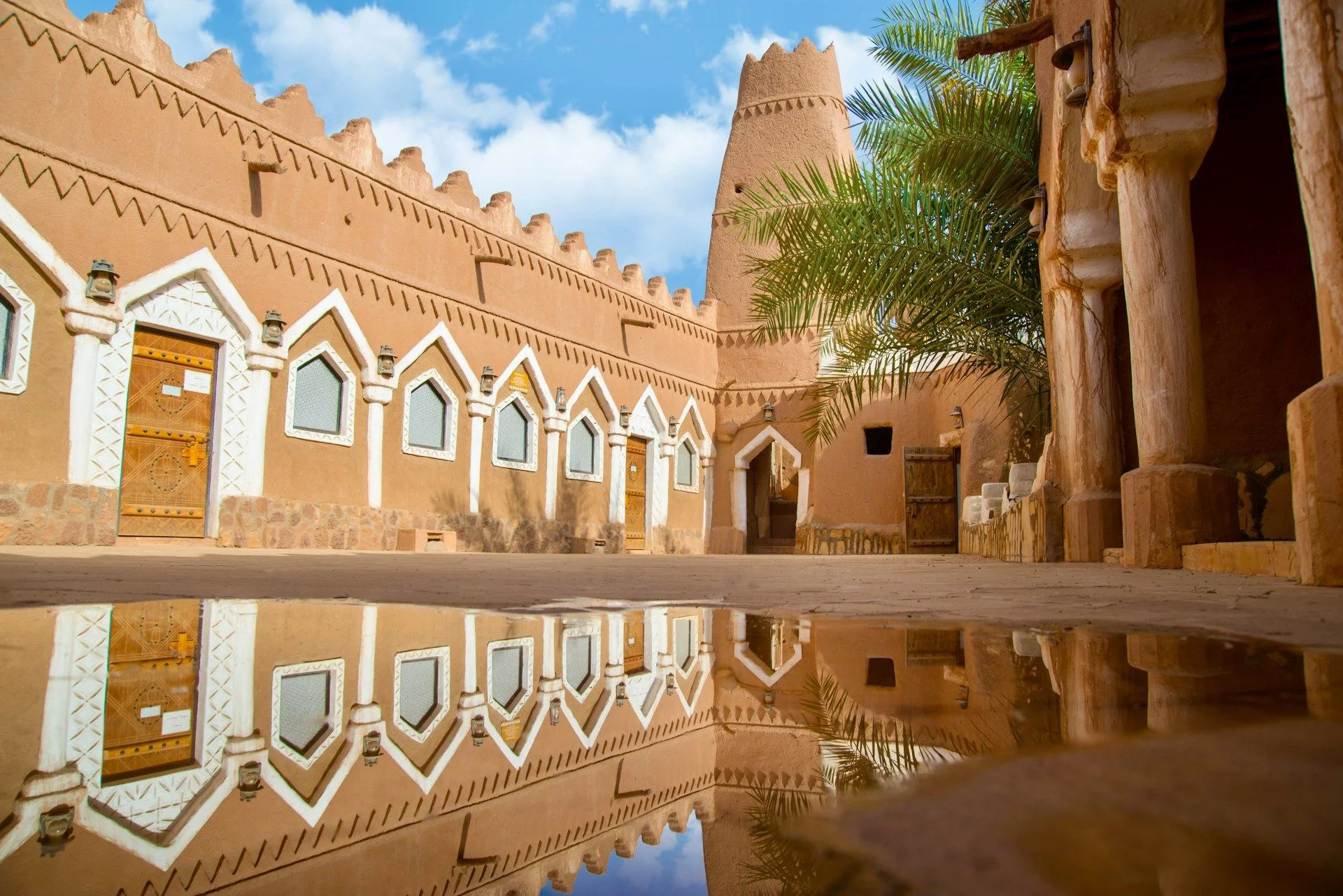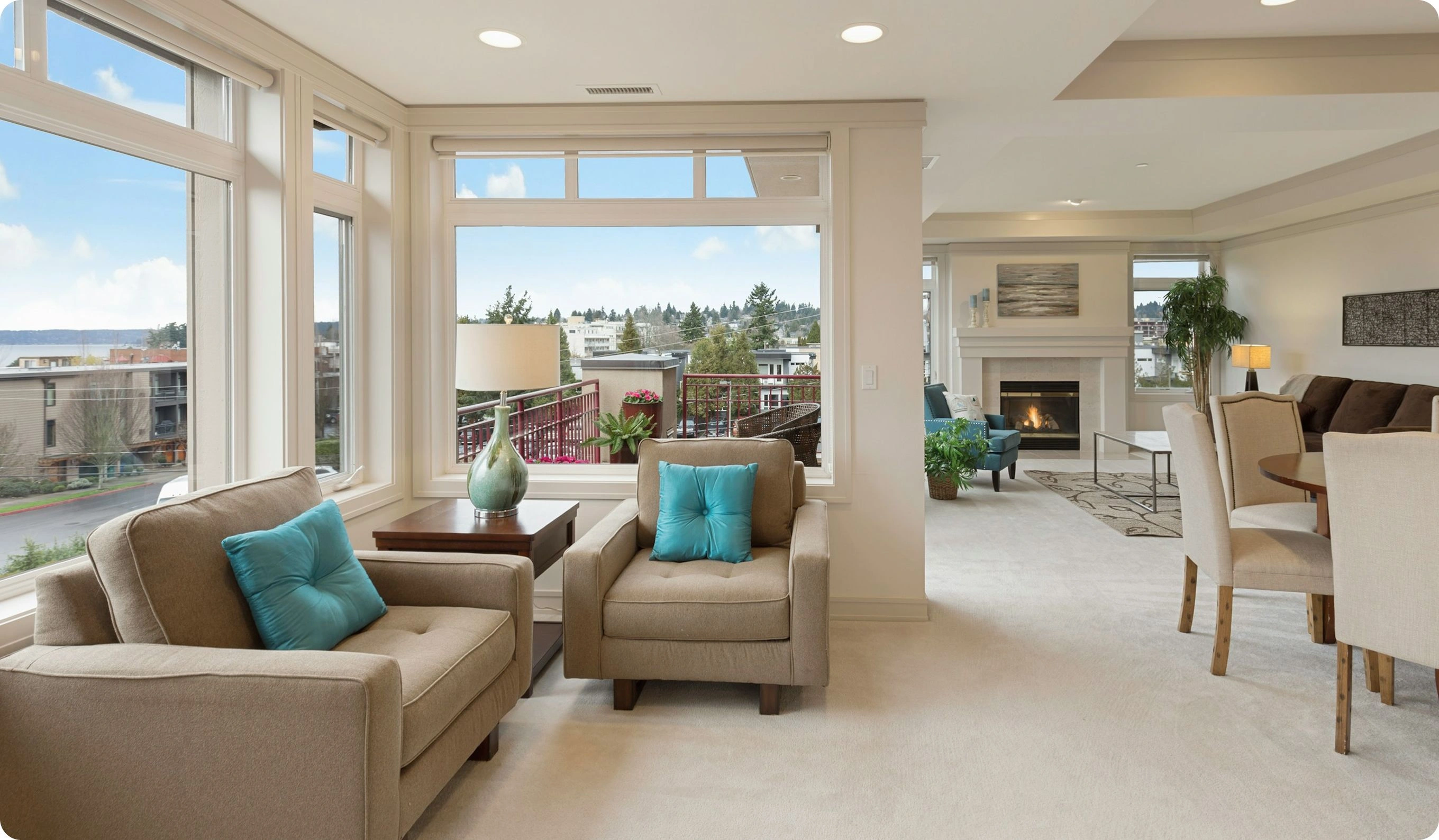Commercial Property Listings in Saudi ArabiaReal estate in country reshapingglobal perception

Best offers
in Saudi Arabia
Benefits of investment in
Saudi Arabia real estate
High-growth market under Vision 2030
Government reforms are transforming the real estate sector and unlocking major opportunities in housing and tourism.
Tax-free income and capital gains
Rental and resale profits are tax-exempt, making returns exceptionally investor-friendly.
Mega-projects reshaping urban and coastal zones
Riyadh, Jeddah, and the Red Sea coast are being transformed into global investment magnets.
High-growth market under Vision 2030
Government reforms are transforming the real estate sector and unlocking major opportunities in housing and tourism.
Tax-free income and capital gains
Rental and resale profits are tax-exempt, making returns exceptionally investor-friendly.
Mega-projects reshaping urban and coastal zones
Riyadh, Jeddah, and the Red Sea coast are being transformed into global investment magnets.

Useful articles
and recommendations from experts
Buy Commercial Property in Saudi Arabia: Capitalizing on Vision 2030 Economic Reforms
Saudi Arabia, long recognized for its vast oil reserves and pivotal role in global energy markets, has embarked on a broad economic transformation plan known as Vision 2030 economic reforms. These reforms aim to diversify the kingdom’s economy, reduce dependency on hydrocarbons, and foster innovation across sectors such as finance, tourism, entertainment, and technology. Amidst this shift, demand for commercial real estate has surged, creating new possibilities for international investors looking to buy commercial property in Saudi Arabia.
One of the most compelling aspects of the Saudi Arabian market is its sheer size and buying power. As the largest economy in the Middle East, the kingdom features a well-established infrastructure network and an expanding consumer base. Government-led growing infrastructure projects, such as airport expansions and new urban developments, have sparked heightened interest in office buildings, retail centers, industrial parks, and mixed-use complexes. These initiatives, coupled with an evolving regulatory environment, make Saudi Arabia an increasingly attractive venue for foreign direct investment in commercial properties.
Crucially, the government has loosened many restrictions on foreign property ownership over the last few years. While rules remain in place around certain regions, particularly the holy cities of Mecca and Medina, reforms have generally simplified the process of acquiring land, registering property, and securing long-term leases. For international buyers, the improved transparency and accessibility help mitigate risks, although partnering with local consultants who understand changing business regulations remains essential.
Moreover, Saudi Arabia’s central position as a Middle East investment hub cannot be overstated. From its strategic location on the Arabian Peninsula, businesses can reach major markets in Europe, Asia, and Africa with relative ease. The country’s multiple trade ports, significant airport hubs, and advanced road networks offer seamless logistical pathways, supporting a steady influx of corporations and entrepreneurs who seek to establish offices, factories, or distribution centers. In this context, commercial real estate becomes more than just an asset class—it represents an integral part of Saudi Arabia’s trajectory toward economic modernization and global competitiveness.
Commercial Real Estate for Sale in Riyadh: A Prime Capital Opportunity
As Saudi Arabia’s political, administrative, and economic heart, Riyadh stands at the forefront of the kingdom’s real estate boom. For investors seeking commercial real estate for sale in Riyadh, this sprawling metropolis offers a diverse array of office towers, retail complexes, and industrial zones. The city’s skyline, once dominated by government edifices and traditional architecture, now features modern skyscrapers designed to meet international corporate standards.
In the past, Riyadh’s property sector was primarily driven by local demand and state-sponsored projects. Today, however, the city is welcoming foreign businesses with open arms. This evolution stems partly from Vision 2030’s broader push to make the kingdom more globally accessible. As more multinational corporations move regional headquarters or large-scale operations to Riyadh, prime office spaces in business districts such as Olaya, King Abdullah Financial District (KAFD), and the Diplomatic Quarter have become hot commodities.
Retail and hospitality segments also benefit from the capital’s elevated profile. As disposable incomes rise and consumer tastes diversify, shopping malls and mixed-use developments are consistently in demand. Entertainment complexes, fine dining restaurants, and leisure destinations have become central to Riyadh’s urban fabric, resulting in both short-term profits and long-term capital appreciation for those who invest in strategically located commercial assets.
Still, navigating Riyadh’s property market requires careful research. Zoning regulations, building codes, and licensing processes can vary between different parts of the city. Engaging a reputable local brokerage or legal counsel is vital for understanding land-use restrictions, ensuring compliance with Saudi laws, and performing thorough due diligence. Yet, once these processes are managed, many investors find that the city’s growth trajectory and strong occupancy rates offer compelling reasons to commit capital.
Office Space in Jeddah: Gateway to the Red Sea and Western Saudi Arabia
Though Riyadh commands significant attention, Jeddah emerges as a vibrant alternative for those interested in office space in Jeddah or other commercial opportunities. Located on the Red Sea coast, Jeddah is often regarded as Saudi Arabia’s commercial gateway to global shipping routes. Historically, the city’s economy revolved around trade and commerce, with the seaport serving as a critical lifeline for imports and exports.
Today, Jeddah remains a hub for logistics, but it has also branched out into tourism, retail, and professional services. Corporate offices and tech startups increasingly set up shop here to tap into a diverse labor pool, foster connections to the Middle East and Africa, and benefit from Jeddah’s cosmopolitan environment. Thanks to growing infrastructure projects—such as improved highways, railway expansions, and an upgraded airport—both local and multinational firms find it easier to establish a Western Saudi Arabia presence.
Jeddah also symbolizes the kingdom’s cultural richness and entrepreneurial spirit. Many prospective tenants prefer the city’s more relaxed atmosphere compared to the capital, resulting in a steady demand for modern, well-located offices. Whether it’s a start-up looking for co-working spaces or an established conglomerate seeking a headquarters, Jeddah’s mix of historic districts and contemporary commercial corridors offers multiple investment avenues.
Pricing and returns for Jeddah offices can vary depending on proximity to major landmarks like Tahlia Street, the Corniche, or King Abdulaziz International Airport. Investors should focus on high-growth neighborhoods equipped with robust transport links, ample parking, and modern utilities. In the long run, Jeddah’s strategic position on the Red Sea coast bodes well for maintaining healthy occupancy rates, especially as tourism grows and trade channels with Africa continue to strengthen.
Saudi Arabia Property Market: Emerging Opportunities in NEOM and Beyond
Any conversation around the Saudi Arabia property market outlook would be incomplete without referencing NEOM—an ambitious, futuristic city under development in the kingdom’s northwest region. Touted as a hub for renewable energy, cutting-edge technology, and sustainable urban living, NEOM represents the core of Saudi Arabia’s drive to diversify its economy. The project aims to attract international talent and companies by offering unique living conditions, specialized industrial zones, and advanced infrastructure. For forward-looking investors, the city symbolizes emerging opportunities in NEOM that span commercial, residential, and industrial real estate.
However, the potential of the Saudi property market extends far beyond NEOM. As part of Vision 2030, authorities have launched numerous “giga-projects” aimed at boosting tourism, cultural preservation, and entertainment. The Red Sea Project, Qiddiya, and Diriyah Gate are just a few examples. Each initiative generates fresh demand for hotels, recreational facilities, retail outlets, and even specialized office spaces aligned with tourism or cultural heritage management. Such developments also help diversify real estate offerings, presenting investors with a wide range of asset classes to explore.
Beyond these mega-projects, smaller cities and secondary markets are also ripe for growth. Dammam, Al Khobar, and Jubail in the Eastern Province—driven by petroleum, petrochemicals, and manufacturing—host thriving business centers that require updated commercial spaces. Meanwhile, in the more remote corners of Saudi Arabia, eco-tourism ventures or mineral extraction facilities spark localized booms, creating niche commercial real estate possibilities.
Investors monitoring the Saudi market must remain mindful of changing business regulations and possible shifts in government priorities. While the kingdom is committed to economic diversification, each phase of Vision 2030 brings adjustments to the legal landscape, labor laws, and tax structures. Still, the broader trend points toward increased openness, with the government actively courting foreign capital to fuel its ambitious reforms.
In addition, prospective buyers should not overlook cultural considerations and local customs. Compliance with Saudi laws regarding dress codes, gender segregation, and religious holidays can influence the design and operation of commercial properties. Yet, with proper cultural sensitivity and local partnerships, foreign investors can smoothly integrate into the market and unlock profitable ventures.
Altogether, the decision to invest in Saudi Arabian real estate entails both challenges and remarkable prospects. From commercial real estate for sale in Riyadh to office space in Jeddah, and from the grand vision of NEOM to smaller developments peppered across the kingdom, Saudi Arabia’s property landscape is rapidly evolving. Fueled by Vision 2030 economic reforms, an emerging middle class, and a drive to become a diversified Middle East investment hub, the nation’s real estate sector stands at the precipice of transformative expansion. For global investors prepared to conduct meticulous research and navigate a changing regulatory environment, the payoff can be significant—yielding both stable income streams and the potential for long-term capital appreciation. By staying informed about the Saudi Arabia property market outlook and aligning with the country’s bold future-facing projects, savvy buyers can confidently buy commercial property in Saudi Arabia and position themselves for success in one of the world’s most dynamic emerging markets.
